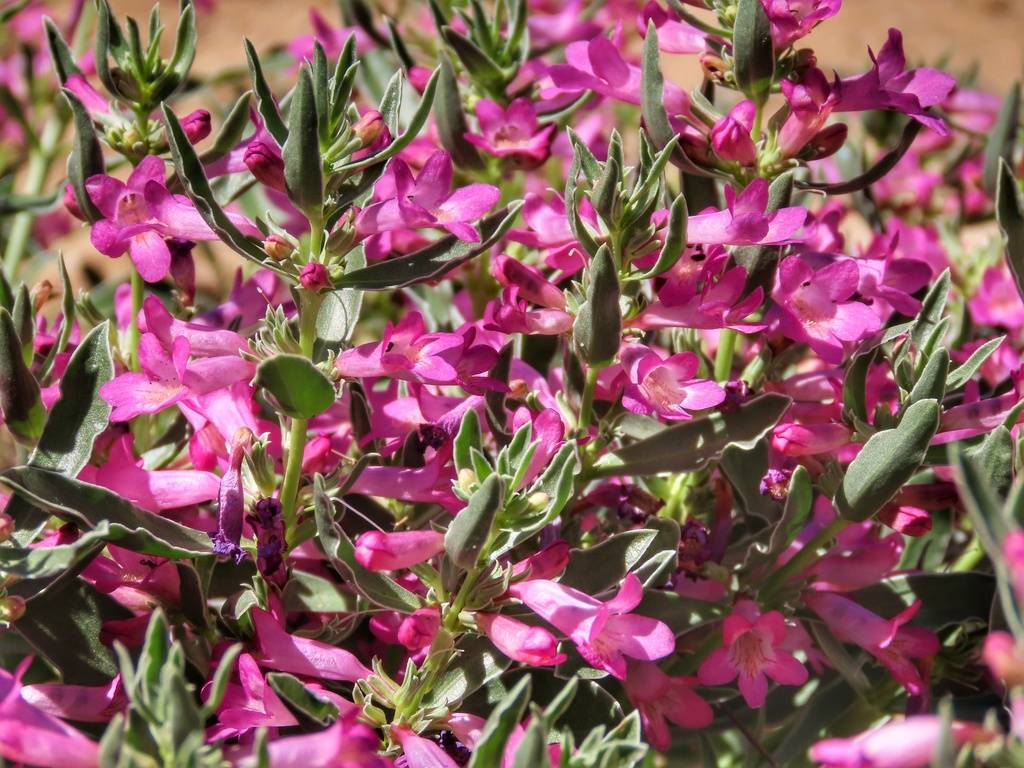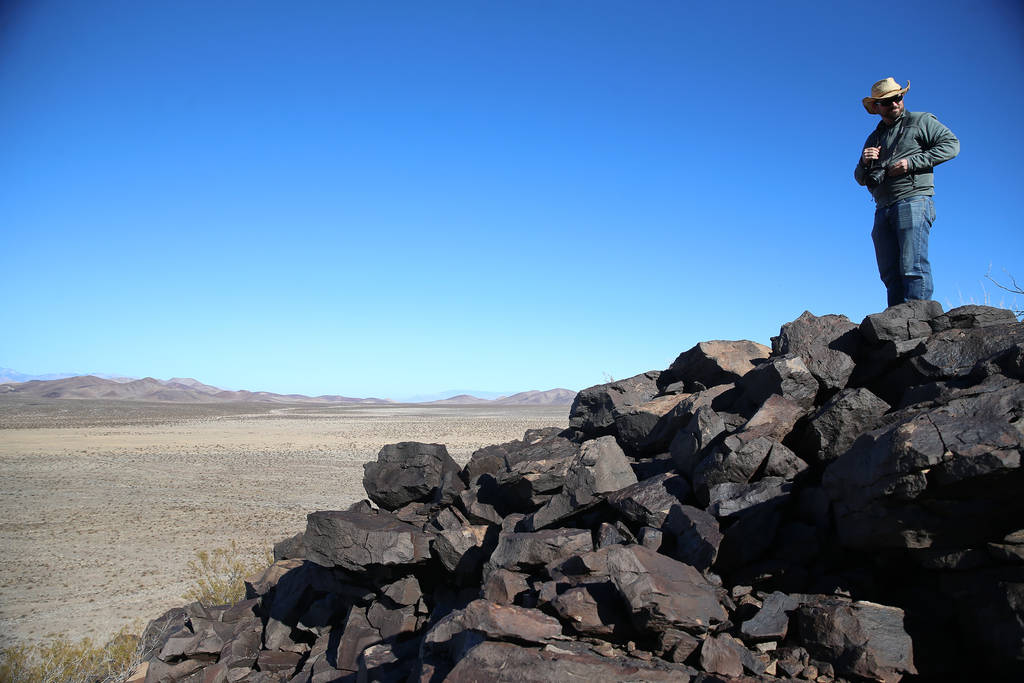Group sees rare plant as tool to slow Las Vegas Valley growth
Until a few months ago, environmentalist Patrick Donnelly had barely heard of the white-margined beardtongue.
Now his organization hopes to use the rare flower to block new development in the desert south of the Las Vegas Valley.
The Center for Biological Diversity has announced plans to seek federal endangered species protection for the perennial plant, which grows in isolated patches of windblown sand in several valleys targeted for urban expansion.
According to the Tucson, Arizona-based environmental group, some of the best habitat in Southern Nevada for the white-margined beardtongue is in Ivanpah Valley, near the site of Clark County’s proposed regional airport, and in Hidden Valley, where county officials want to open roughly 40,000 acres of federal land for commercial and residential development east of Interstate 15 between Sloan and Jean.
Donnelly, the center’s state director in Nevada, said this special flower needs to be protected before developers “bulldoze its habitat to build ‘Henderson South.’”
“We’re fighting for this tiny plant as a way of fighting for our desert,” he said.
But Clark County Commissioner Michael Naft said a new endangered species listing won’t necessarily derail future development in Hidden and Ivanpah valleys.
Naft said such projects can proceed “as long as there’s a plan in place” for protecting the beardtongue and other rare wildlife there.
“Clark County has a pretty good track record of working with sensitive areas,” said Naft, whose district includes the two valleys.
Pink flowers, hairy throat
Commissioners approved a resolution in June seeking federal legislation to open more public land for development. Draft language is being written for a lands bill that could steer growth in and around the Las Vegas Valley for decades to come.
Donnelly sees the beardtongue as a way to block such urban expansion.
The plant’s name is “not great,” he said, but it is descriptive. The rare variety of penstamen sports green leaves with white edges and flowers with spiky hairs running down their throats. It is only known to grow in a handful of isolated parts of Southern Nevada, southeastern California and northwestern Arizona.
Donnelly photographed the roughly 6-inch-tall plant when it bloomed a few weeks ago in Hidden Valley with a showy display of small pink blossoms. As the weather heats up, those flowers will die back to an underground root ball.
“Most of the year you can’t even see it,” he said.
The center hopes to file its endangered species petition with the U.S. Fish and Wildlife Service this summer.
Petitioned in the past
County officials insist they are already looking out for the white-margined beardtongue.
“We have been planning for this species for a number of years,” said Kimberley Jenkins, principal environmental specialist with the county’s Desert Conservation Program.
The plant is one of 78 species already covered under a key federal permit that allows for development in areas populated by protected plants and animals in exchange for conservation measures elsewhere.
The beardtongue was a candidate for the endangered species list in 1993, but the U.S. Fish and Wildlife Service said more information was needed on potential threats to its survival. The Nevada Native Plant Society sought to get it added to the state’s list of protected plants in 2007, but the petition was denied.
Experts think the species has a pretty good chance of qualifying for endangered status this time around. But even if it doesn’t make the list, Jenkins said, the county plans to protect it.
With the congressional request for more land for development in the desert, county officials have offered to set aside 2,669 acres in Hidden Valley and about 3,400 acres in Ivanpah Valley where the beardtongue is known to grow.
Donnelly worries that won’t be enough, especially if those patches of sand are surrounded someday by urban sprawl.
“This is what the (Endangered Species Act) is for. It’s meant to highlight in sharp detail the areas where species are at risk of extinction,” he said. “Protecting these plants as endangered species will help ensure a vibrant, healthy desert for future generations.”
Contact Henry Brean at hbrean@reviewjournal.com or 702-383-0350. Follow @RefriedBrean on Twitter.
Also up for listing
Along with the white-margined beardtongue, the Center for Biological Diversity wants federal endangered species protection for the Las Vegas bear-poppy.
The rare plant with fuzzy leaves and large yellow flowers grows in gypsum-rich soils around Lake Mead, including parts of Gold Butte National Monument and isolated patches in Arizona, where environmentalists say it is under threat from mining and urban sprawl.
Last year, the center petitioned to have one of the plant's key pollinators, the Mojave poppy bee, added to the endangered species list.
The national environmental group has made a name for itself by filing petitions to protect rare plants and animals, then suing the U.S. Fish and Wildlife Service for failing to process those petitions in a timely manner.
"A large proportion of our lawsuits are deadline lawsuits," said Patrick Donnelly, the center's state director for Nevada.






















